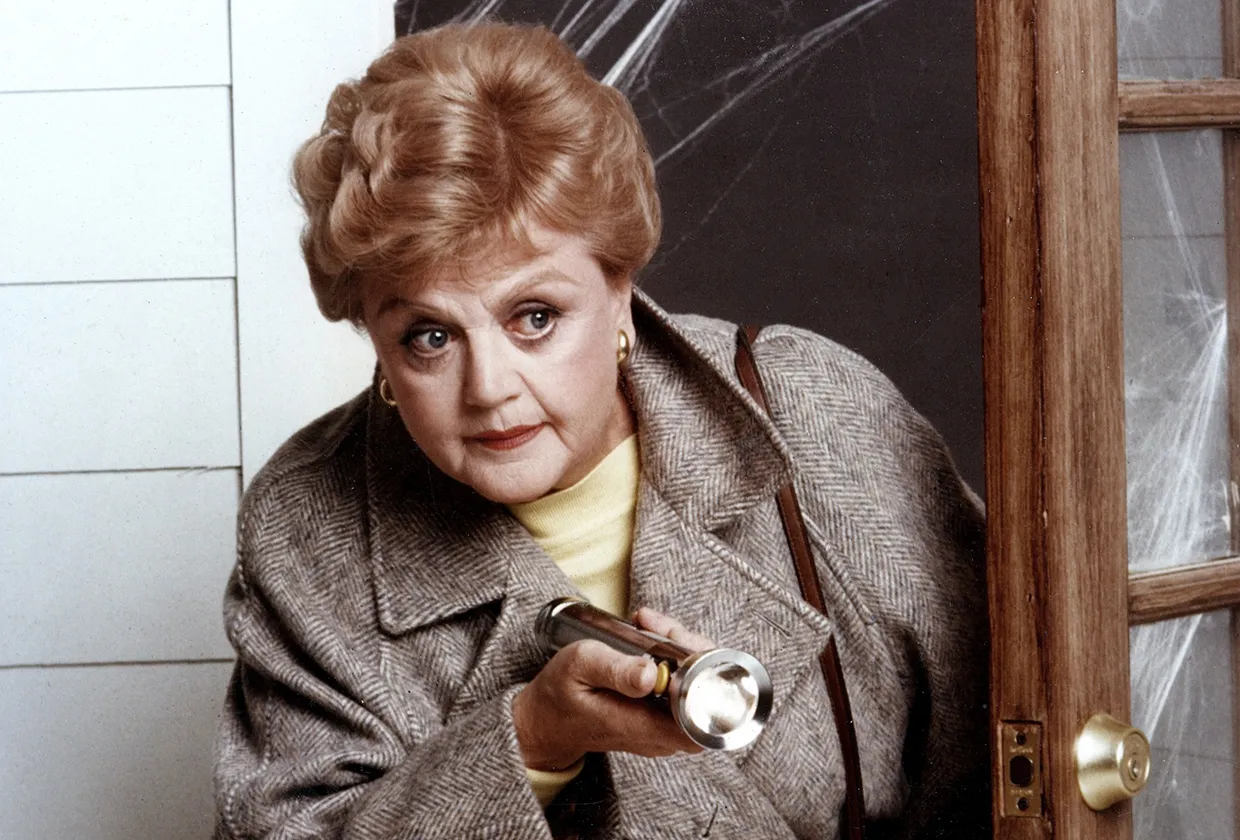Books & Culture
Sherlock Vs. Sherlock: What Two New Sherlock Holmes Pastiches Tell Us About the State of Fan Fiction

When Harry Potter and the Goblet of Fire was released at midnight in 2000, the manager of the bookstore I worked for in Phoenix, Arizona, screwed with the staff by reading some Potter fan-erotica over the loudspeaker before we opened the doors to the public. Fifteen years later, the term “fan fiction” is way more commonplace, but, if you want to get real, mainstream fan fiction has existed in the realm of another British literary stalwart — Sherlock Holmes — for about 100 years. Two recent releases — the novel Moriarty by Anthony Horowitz (HARPER) and the anthology In the Company of Sherlock Holmes edited by Leslie S. Klinger and Laurie R. King (PEAGUSUS) — are fascinating and opposing entries into wacky world of Sherlock Holmes pastiches.
Anyone who knows anything about Sherlock Holmes scholarship is aware of “the game”; the idea that Sherlock Holmes “scholars” (nerds) know the “truth” (fiction) that Holmes and Watson were real people and Sir Arthur Conan Doyle was merely John Watson’s literary front. If you read the footnotes in The New Annotated Sherlock Holmes (also edited by Klinger) and you failed to catch the stuff in the introduction about “the game,” you’ll think you’re going crazy since all the academic minutia proceeds from the a priori notion that one of the greatest fictional characters in the western canon was a real person. Even Harry Potter slash fic where Harry is having sex with Gandalf from Lord of the Rings, doesn’t go this far.
Still, regardless of the meta-fictional contexts in the fandom, you might be wondering how Sherlock Holmes stories not written by Doyle can legally exist at all. Well, they can because nearly all the canonical Sir Arthur Conan Doyle-penned Sherlock Holmes “books” (the five short story collections and four novels) are in the public domain, and have been for some time. That is, except for certain stories contained in The Case-Book of Sherlock Holmes, which is because the original publication dates of the various collected stories vary from story to story. Everything published before 1923 is in the public domain in the U.S., and a few of the stories in Case-Book are right on the cusp. And while the estate of Sir Arthur Conan Doyle has been unsuccessful at extending copyrights of the stories and books, it was holding out for keeping the characters themselves out of the public domain; and was even charging licensing fees and threatening to block book sales if authors and editors (like Klinger and King) didn’t comply. But, very recently, the estate and its practices essentially lost to the fans.
You may have read that in the United States of America, Sherlock Holmes the character is officially in the public domain as of Fall 2014, which is 100% due to Leslie Klinger taking all of this to court. Both he and Laurie R. King are perhaps the biggest Sherlock Holmes fans on the planet. As mentioned, Klinger is responsible for the New Annotated Sherlock Holmes as well as numerous other Holmes-related texts. Meanwhile, among other things, Laurie R. King is the author of a series of Sherlock Holmes pastiches of her own about a character named Mary Russell who is, in her novels, Sherlock’s apprentice. (The first of these books was The Beekeeper’s Apprentice) These people aren’t out to hurt Sherlock Holmes at all. This new anthology is actually their second together (the first was 2011’s A Study in Sherlock ) but the book itself has taken on something of a larger significance since it represents above all; the triumph of Sherlock Holmes fans over the Doyle estate.
And yet, within the same month, there’s a novel called Moriarty released by popular writer Anthony Horowitz which is officially licensed and endorsed by the estate of Sir Arthur Conan Doyle. In sharp parallel to the King and Klinger anthology, this is also Horowitz’s second Sherlock Holmes novel — his first being House of Silk in 2011. Both Horowitz’s new book Moriarty and The House of Silk present new “adventures” that are asserted by the Doyle estate to be part of the “real” canon of Sherlock Holmes. Three years ago, noted reviewer Niall Alexander pointed out that the estate does this “at their own peril,” which to me is correct. The victory of Klinger and King in making sure Holmes himself is in the public domain is hardly the first proof that the fans of Sherlock Holmes own it more than the people creating or controlling it. The man himself — Sir Arthur Conan Doyle — infamously killed off Holmes in “The Final Problem,” calling Holmes a “brute.” People in England wore black armbands and even Doyle’s mom was pissed. The contentious relationship between the adoring public of Sherlock Holmes is analogous to how little credit the character himself wants to take the mysteries that he solves. Imagine how jerky Benedict Cumberbatch or Robert Downey Jr. or Jonny Lee Miller are as the character of Holmes, and in a sense that’s how Conan Doyle regarded his fans. (In season two of Sherlock, Cumberbatch even sneers when he uses the word fan.) The estate, while obviously “fans” of the stories, seem to have a similar adversarial attitude toward the “real” fans.
This isn’t to say that Anthony Horowtiz’s new novel Moriarty sucks and In the Company of Sherlock Holmes rocks. But instead that Horowitz’s novel has more baggage than a Holmes pastiche that is written for “fun.” Plus, these recent books can’t possibly represent a real cross-section of all the non-canon Sherlock Books out there. A Jack-the-Ripper style-killer kind of pops up in Moriarty, but another Sherlock Holmes expert and novelist — Lyndsay Faye — did that same thing (and better) in her Holmes novel Dust and Shadow a few years ago. Meanwhile, In the Company of Sherlock Holmes is an anthology of tons of different types of Sherlock Holmes stories, including entries from Michael Connely, Cornelia Funke, Jeffery Deaver, Harlan Ellison and many others. The best of these stories are like “By Another Name,” by Michael Dirda, in which a kind of marriage of “the game” and Conan Doyle’s real life is attempted in a way that is both witty and satisfying for the fan. If you don’t catch all the references in a story like this or “The Memoirs of Silver Blaze” by Michael Sims (which is told from the perspective of a Holmes-canon horse) you’re not meant to. In the Company of Sherlock Holmes even boasts a story called “Dr. Watson’s Casebook” by Andrew Grant, which retells The Hound of the Baskervilles as psudeo-Facebook updates. If you love Holmes the way I do, you’ll love it. If you’re a casual fan, you’ll probably think it’s as close to comprehensible as that erotic Harry Potter action.
Moriarty on the other hand is more welcoming to casual fans. It’s narrated by a stranger to the Holmes canon, a Pinkerton agent named Fredrick Chase who teams up with a minor canon character named Athenlney Jones. There are some big plot twists with these two, but suffice to say, if you’re not a HUGE aficionado, Moriarty is an easier, more accessible read than In the Company of Sherlock Holmes. It’s not dumbed-down for hardcore Sherlokians, at all, but maybe because its “official,” it tends to lack the super-fun zeal of what a Sherlock Holmes pastiches is capable of. Nicholas Meyer (most famous for directing Star Trek II: The Wrath of Khan) wrote three Sherlock Holmes pastiches back in the day, the first of which was called The Seven-Per-cent Solution (1974) In this (and Meyer’s other Holmes books) the footnote is used excessively to indicate where the author is playing “the game,” by writing as Watson. Meyer’s books also have fun with the time period by teaming Holmes up with Sigmund Freud in The Seven Per-Cent-Solution, with The Phantom of the Opera in The Canary Trainer, and with Oscar Wilde in The West End Horror. If you want your Holmes pastiches to be a little more colorful AND consistent with the Watson voice, Meyer’s pastiches, and Faye’s Dust and Shadow are probably closer to what fans want than the occasional blandness of Moriarty. This makes In the Company of Sherlock Holmes something of a grab-bag, often very fun, but at turns confounding if you don’t know who they’re talking about.
In real life, Sir Arthur Conan Doyle created Professor James Moriarty merely as a plot contrivance to kill off Holmes. This means, any adaptation of the character Moriarty (including the recent TV versions, I won’t spoil anything from either Sherlock or Elementary here) are always better than the source material. And it’s there, where Horowitz’s novel succeeds; he takes Moriarty and the plot surrounding the master-criminal more seriously than Conan Doyle did. Which, in turn is where In the Company of Sherlock Holmes also succeeds, and all Holmes pastiche-writers from Lyndsay Faye to Nicholas Meyer, to yes, even Michael Chabon, are winners, too. They all love Holmes and his adventures way more than the man who created the great detective thought possible. Which, today, remains the biggest cultural mystery we’ll hopefully never get tired of investigating.









